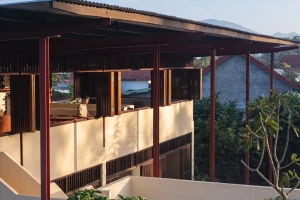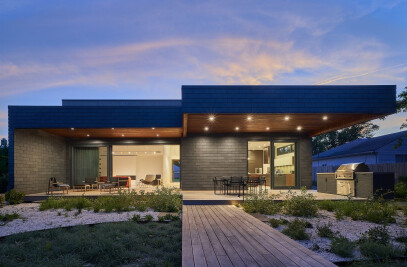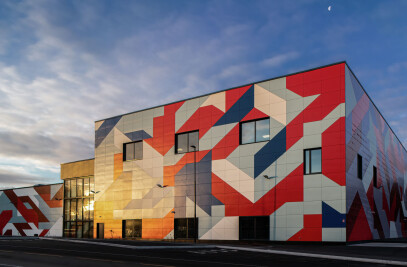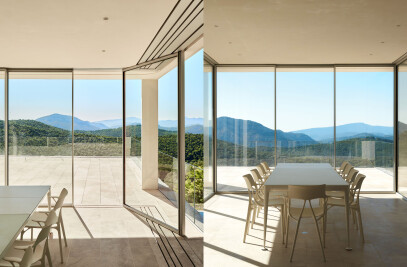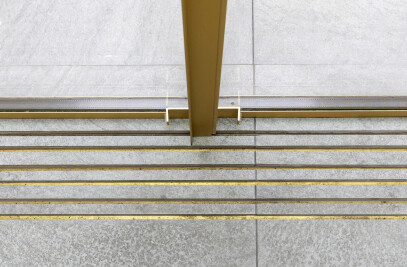Importance of projects for marketing to architects and designers
Projects are the most important aspect of marketing for manufacturers targeting architects and designers. They speak their language and equip architects and designers with the insight and inspiration they require when specifying products for future projects by:
- Demonstrating Real-World Application: Project case studies showcase how the manufacturer's products or services have been successfully applied in real-world design scenarios. Architects can see practical examples of how these products function, perform, and contribute to the overall success of a project.
- Providing Design Inspiration: Architects are constantly seeking inspiration for their projects. By presenting completed projects where the manufacturer's products played a significant role, these case studies can inspire architects to consider these products for their own designs.
- Building Trust and Credibility: High-quality projects with successful outcomes serve as concrete evidence of the manufacturer's expertise and reliability. When architects and designers see real examples of successful collaborations with the manufacturer, they are more likely to trust the brand and consider their products as reliable choices.
- Influencing Decision-Making: Projects presented in case studies or marketing materials can influence the decision-making process of architects and designers. By highlighting the benefits and features of their products within the context of completed projects, manufacturers can sway the preferences of specifiers.
- Illustrating Versatility: Different projects often require different solutions. By showcasing projects across diverse sectors and design styles, manufacturers can demonstrate the versatility of their products and their ability to meet various design requirements.
- Connecting Emotionally: Projects have the power to evoke emotions and create a connection with the audience. By featuring visually appealing and aesthetically pleasing projects, manufacturers can create an emotional appeal that resonates with architects and designers.
- Offering Practical Examples: Architects and designers appreciate practical examples that provide insights into the implementation of specific products or design solutions. Projects allow manufacturers to share real-world examples of how their products were used to solve design challenges.
- Supporting Collaboration: Projects involving collaborations with renowned architects and designers can enhance the manufacturer's reputation and establish valuable connections within the design community. These collaborations can lead to more opportunities for future projects.
- Showcasing Innovations: Manufacturers often introduce new products or innovative solutions. Projects provide a platform to demonstrate these innovations in action, allowing architects and designers to see the potential benefits and applications.
- Educating and Informing: Projects serve as educational tools, enabling manufacturers to share valuable information and insights with architects and designers. This can include technical details, sustainability features, and creative use-cases.
Case study example

The Gate Aveneue at DIFC is an 880-metre long promenade in Dubai with shops and restaurants connecting the buildings in the Gate Avenue financial district.
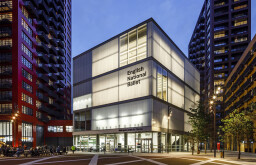
Selecting a project to make a case study for
When manufacturers are selecting a project to create a case study, several important factors should be considered. These factors will ensure that the chosen project aligns with their goals, showcases their products or services effectively, and provides valuable insights for their target audience.
- Relevance: The selected project should be relevant to the manufacturer's products or services. It should demonstrate how the product(s) were utilized in the project to contribute to its success.
- Uniqueness: Manufacturers should look for projects that stand out in terms of design, innovation, or use of materials. A unique project will capture the audience's attention and make the case study more compelling.
- Success and Impact: Manufacturers should consider projects that have achieved significant success or have had a positive impact on their surroundings. Demonstrating the successful implementation of their products can boost credibility and trust in their brand.
- Collaboration Opportunities: Projects that involve collaborations with renowned architects, designers, or other industry professionals offer an opportunity to showcase partnerships and highlight the manufacturer's role in successful teamwork.
- Diversity: Manufacturers may also consider selecting projects from different sectors or industries to demonstrate the versatility of their products across various applications.
- Feasibility and Access: Ensure that the project is feasible to study and that there is access to relevant information and data required for creating a comprehensive case study.
- Timeliness: Select projects that are recent or currently ongoing to ensure relevance and keep the case study up-to-date.
Case study example

Founded in 1980 in Brescia, OMB Saleri is a mechanical company producing valves for gas management in the automotive sector, having always been characterised by a strong drive towards innovation, not only in terms of...

How to create case studies: Images + text
Increasingly, architects and designers are seeking product inspiration online. Capturing the attention of these influential and often hurried specifiers is key. For this reason, manufacturers should think carefully about the layout and presentation of their projects.
Images
Images are key — in a world where photography is integral to the social discourse, the old adage “a picture is worth a thousand words” couldn’t be more apt.
- Visual Quality: Ensure that the images are of high resolution and clarity. Blurry or pixelated images may detract from the overall presentation and professionalism of the case study.
- Composition: Look for images that have well-composed shots, capturing the key elements of the project. Consider using a mix of wide-angle shots and close-ups to provide a comprehensive view of the design and product details.
- Lighting: Images should be well-lit, showcasing the project in its best possible light. Avoid images that are too dark or overexposed, as they can diminish the visual impact.
- Perspective: Include images from different perspectives to offer a well-rounded view of the project. This can include exterior views, interior spaces, and aerial shots if applicable.
- Highlight Manufacturer's Products: Ensure that the images prominently feature the manufacturer's products or services being used in the project. The images should demonstrate how these products contribute to the overall design and functionality.
- Diversity: Collect images that represent various aspects of the project, such as different rooms, spaces, or features. This diversity will help provide a comprehensive view of the project's design and the manufacturer's contributions.
- Consistency: Maintain a consistent style and visual language throughout the case study. This ensures a cohesive presentation and strengthens the manufacturer's brand identity.
- Permission and Copyright: Ensure that you have the necessary rights and permissions to use the images in the case study. Avoid any copyright infringement issues by obtaining permission from the project's photographer or owner.
Case study example

Welcome to Riviera, our new address in Milan. Much more than a showroom, RIVIERA is a creative hub founded and directed by Simple Flair who have also designed the space. The result is a a connected place that is...
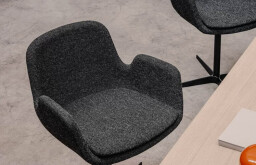
Text
The ideal project will mix good photography and written text to provide an all-round narrative. When writing text:
- Clearly Define Objectives: Start by clearly defining the objectives of the case study. What do you want to communicate to the audience? Whether it's demonstrating product effectiveness, sustainability, or design versatility, having clear objectives will guide the writing process.
- Target Audience: Consider the target audience for the case study. Will it be architects, designers, potential clients, or industry peers? Tailor the language, tone, and level of technicality to suit the audience's expertise and interests.
- Showcase Product Application: Clearly articulate how the manufacturer's products or services were used in the project and their specific contributions to the design. Explain the unique features and benefits of the products in the context of the project's requirements.
- Focus on Solutions: Highlight how the manufacturer's products or services addressed specific design challenges or requirements. Emphasize how the solutions provided added value to the project.
- Use Data and Facts: Back up claims and statements with data and relevant facts. This adds credibility to the case study and reinforces the manufacturer's expertise.
- Tell a Story: Frame the case study as a narrative that follows the project's journey from conception to completion. Engage the reader with a compelling storytelling approach that highlights key milestones and challenges.
- Be Concise and Clear: Avoid unnecessary jargon and technical language. Keep the writing clear, concise, and easy to understand, ensuring that the main points are effectively conveyed.
- Include Testimonials or Quotes: If possible, include testimonials or quotes from architects, designers, or clients involved in the project. This adds a personal touch and validates the manufacturer's role in the project's success.
Architects and designers are, on the whole, highly creative and visual people. Therefore, if a project is to stand apart — and sell the product — then images and text must inspire curiosity and a desire to engage with the manufacturer.
Case study example

It’s said that Ryerson University can be found at the intersection of Mind and Action. Ryerson’s new Student Learning Centre can certainly be found there, although the actual street address is the intersection of Yong...

The benefits of publishing your projects on Archello
Archello elevates manufacturer’s involvement in architecture and design projects.
- We are the only platform that showcases manufacturers’ case studies (for example, Markthal Rotterdam). This enables manufacturers to share their extensive thought leadership with more than one hundred thousand A+D firms.
- Archello displays your case studies alongside those of the architects and designers, offering your story and brand more credibility and promoting your collaboration (for example Elbphilharmonie Hamburg).
- Archello has the most comprehensive project stories in the industry. With stories from architects and design firms, manufacturers and consultants, there is nowhere else that architects and designers can learn more about how a project came to be, the brands that were involved, the products that were involved, and how they were used as solutions (for example National Museum of African American History).
- Manufacturers can connect their brand and products to any project they were involved in — in our database of more than 110,000 projects — further increasing their credibility and discoverability.
- Manufacturers can tag their products in over 2,500,000 project photos — further showcasing their products in the real world, their use as solutions in a diversity of projects, and subsequently expanding their reach.
On Archello, publishing projects, connecting a brand to projects and firms, and tagging products in project photos builds a manufacturer’s network, establishes new relationships, and increases the opportunities to have their products specified.
Learn more about how Archello enhances manufacturers' project showcase here
Case study examples

De Vorm's new headquarters celebrates the brand values in an ultimately functional and inviting destination for both employees and visitors. Workplace and showroom...


This two-story, 19,000-square-foot expansion transformed a former single-story warehouse into the home of one of the New York Psychotherapy and Counseling Center’s (NYPCC) Child and Family Mental Health Centers....


INC Design Associates Ltd were appointed by the owners of Merry Hill as architect and lead...
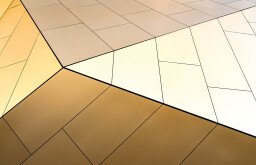

Wind Hill Village, skillfully crafted by Doojin Hwang Architects, finds its serene abode on Jeju Island, South Korea's expansive island spanning 1.8 km2. This exceptional complex, consisting of six detached houses, em...












